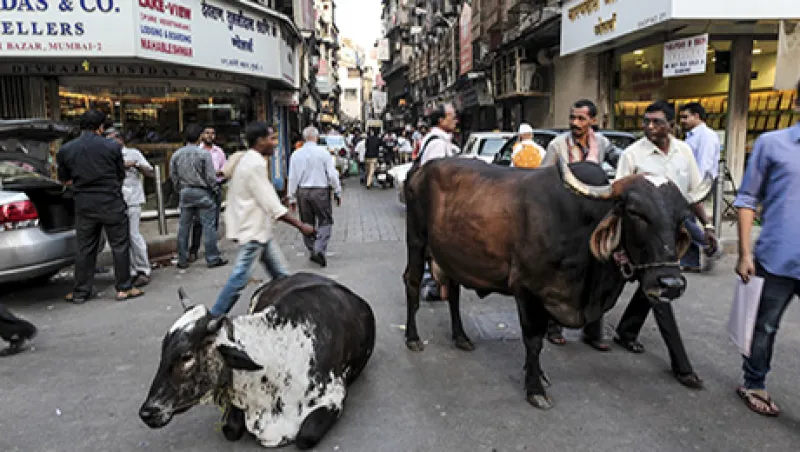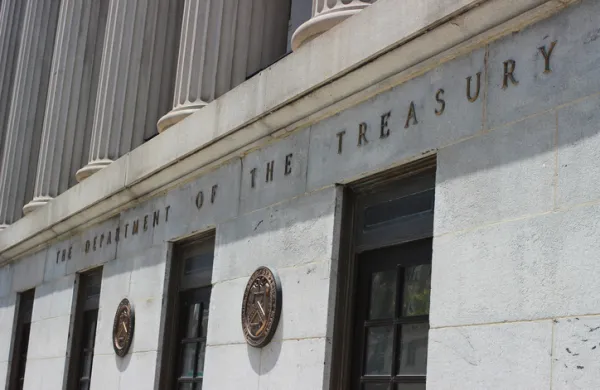India has seemingly rounded a bend in 2015, laying to rest — at least temporarily — the years-long discussion around twin deficits, soaring inflation, a weakening rupee and slowing growth, all of which had spooked international investors and caused foreign direct investment (FDI) outflows to spike. India is once again being considered an emerging-markets darling by optimistic global investors — also a refreshing turn of events, given recent talk that Indonesia might replace a stagnant India as the “I” in the BRICS.
Henry McVey, head of KKR’s global macro and asset allocation team, issued a 2015 outlook highlighting meaningful tailwinds bolstering growth. For one, India is a commodities importer, so the country is poised to benefit immensely from depressed oil and commodities prices. Additionally, India’s fiscal and current-account balances are natural beneficiaries of a recovered U.S. economy. The smaller current-account deficit, also compliments of lower imported oil prices and higher interest rates, coupled with lower inflation is important for the rupee, which has stabilized over the past 12 months after a volatile 2013.
Prime Minister Narendra Modi’s administration has proved helpful so far, having laid the groundwork for job creation and the freeing up of bank financing to key sectors, including energy, infrastructure and agriculture, and to small-and-medium-size enterprises (SMEs). These reforms will help the country harness its powerful demographics and boost real growth to 7 percent from 5 percent. The government is also rightly looking to reduce uncertainty surrounding specific tax matters. In January Modi emphasized to U.S. President Barack Obama his pledge to introduce a more predictable tax regime to further boost investor confidence and enhance FDI inflows.
We at KKR see substantive investment opportunity across asset classes. India remains one of our favorite destinations for 2015, and we think that earnings growth could be stronger than many market observers anticipate because rising confidence will encourage both consumers and businesses to spend more.
With regards to private equity, India has seen investments continue in the good times and bad. Over the past five years, private equity and venture capital together contributed twice the amount of capital raised through initial public offerings in India when compared with other sponsors, according to the India Venture Capital Association (IVCA). What will help fuel activity is the fact that India’s corporate sector, although leveraged, has increased productivity after three difficult years. This productivity should bolster companies’ performance in 2015, and we see equity markets in India doing well.
A more financially secure government that continues to invest alongside independent entities can help enhance private equity’s effects on the economy. The Modi administration is working toward financial stability, yet a greater focus on public-private partnerships can provide the right financial incentives to achieve even and equitable growth. Since private equity– and venture capital–backed companies contribute double the average corporate tax of companies in India, according to the IVCA, this industry plays a critical role in supporting a stronger government balance sheet. Minister of Finance Arun Jaitley’s 2015-2016 Union Budget offered positive news, by allowing private equity, real estate and hedge fund investors to invest in alternate investment funds. While the market still needs to carefully assess the full implications of this from a mechanics standpoint, it highlights the government’s focus on encouraging foreign investment.
Alternative forms of investment such as financing opportunities are also attractive. Debt has been one of our most active areas in India in recent months. We believe that key sectors in the country such as real estate have a large need for capital, yet bank credit is highly regulated, and debt capital markets are challenging. That presents opportunities to provide senior secured credit and junior debt to experienced partners looking to fix their companies’ capital structures, complete projects or honor commitments to existing lenders.
KKR has launched two nonbank finance companies to take advantage of flexible lending opportunities across a variety of sectors. These types of investments often require more due diligence and a higher risk premium. But between the growing demand for nontraditional capital by SMEs and the inability of banks to meet this need, credit remains a great anomaly in the global capital markets and in India.
Beyond the present positive market environment, there are further opportunities for Modi’s administration to enhance India’s business landscape for the long term and position the country to maximize its economic potential. This year is an optimal time to pursue these reforms.
Sustaining India’s growth will need steady investment — and not capital that chases the next hot theme. By increasing select public expenditures, the government can foster a stable landscape for companies to execute plans and for investors to expedite spending. These funds should be targeted at creating real assets such as smart cities, roads and infrastructure. It is essential for the government to take something it can control and execute it very well. India benefits from a number of tailwinds, but achieving economic milestones in the face of a 4.1 percent deficit-to-GDP target is a challenge. Public spending can help overcome obstacles.
The current environment also offers a prime opportunity for India to invest in its demographic dividend to create 100 million new jobs and retrain a 500 million-strong labor force. The potential is great, although the magnitude of work required to maintain growth momentum for the next few decades is daunting. Investment across asset classes is key to fulfilling this goal.
Regardless of the tasks at hand, India is in an advantageous position to make notable economic gains in 2015, and private investors have ample opportunity to partake in the upside. We look forward to watching India play an important role on the global stage, and we remain optimistic for an eventful year.
Sanjay Nayar, based in Mumbai, is the CEO of KKR India and a member of KKR’s Asia portfolio management committee.
Get more on emerging markets.






